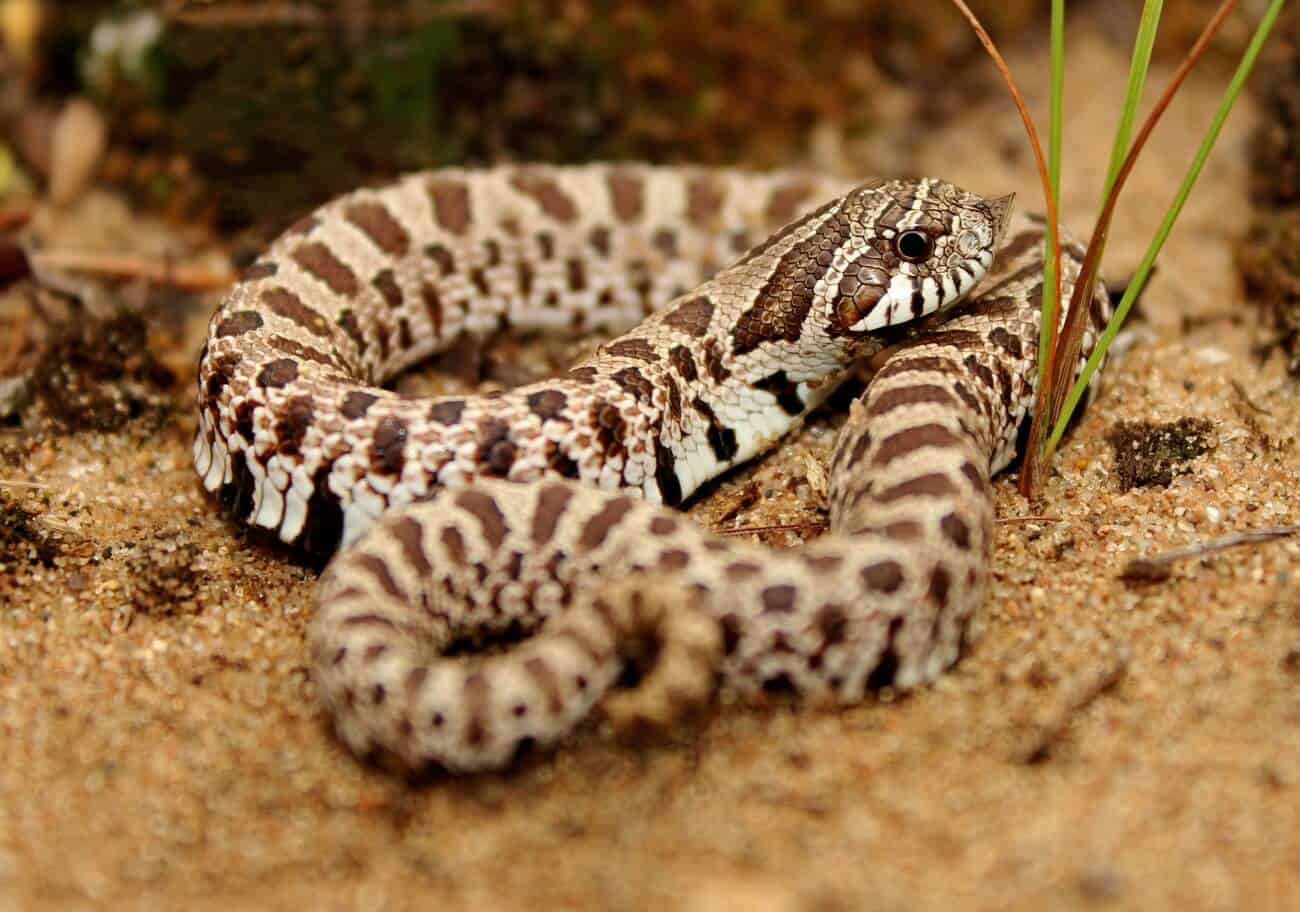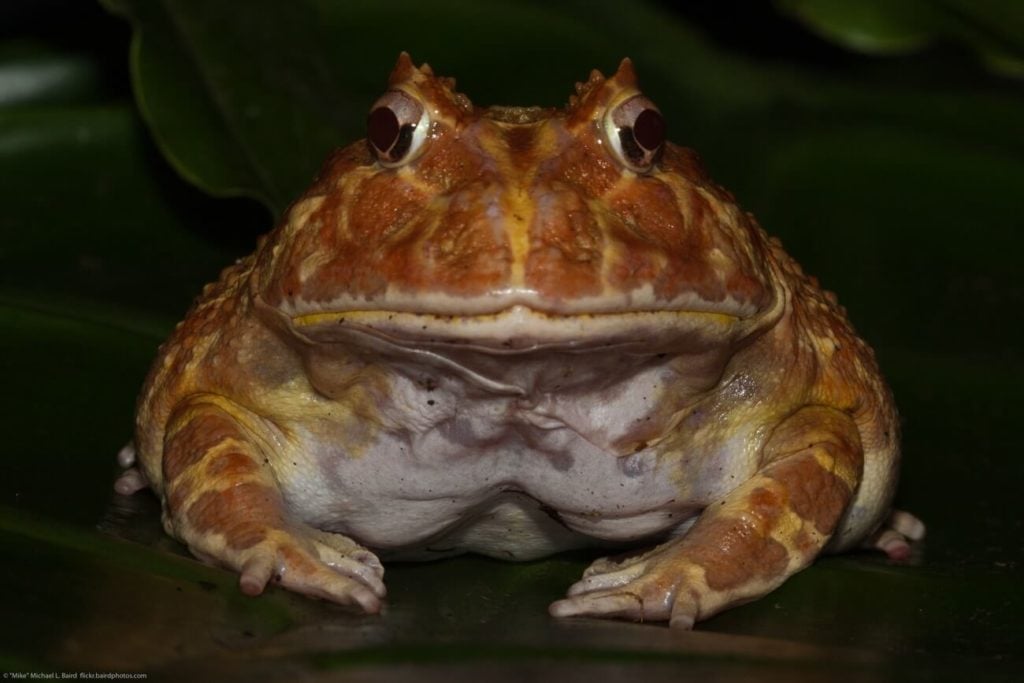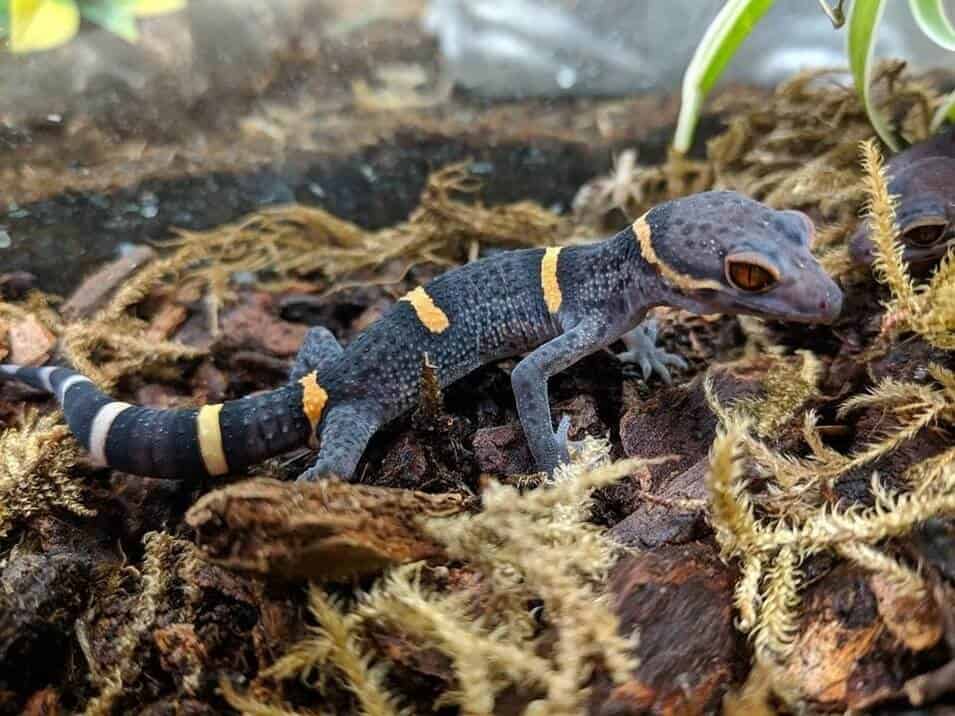Western Hognose snakes are an incredibly interesting and unique species that many reptile-lovers enjoy. These snakes make great pets and don’t require a ton of experience to be properly cared for.
However, it’s still important to have a strong understanding of what conditions they need in order to thrive.
This guide will cover all the essentials of Western Hognose snake care (plus some other interesting facts). By the time you’re done reading this, you’ll be completely prepared to own one yourself!
Table of Contents
Species Summary
Known for their unique defensive behaviors, Western Hognose snakes (Heterodon nasicus) can be a fun reptile to own.
These snakes are known for mimicking more dangerous species as a last-ditch effort to ward off would-be predators. Many snakes will also perform these dramatic acts in captivity, creating a beautiful show of Mother Nature’s trickery.
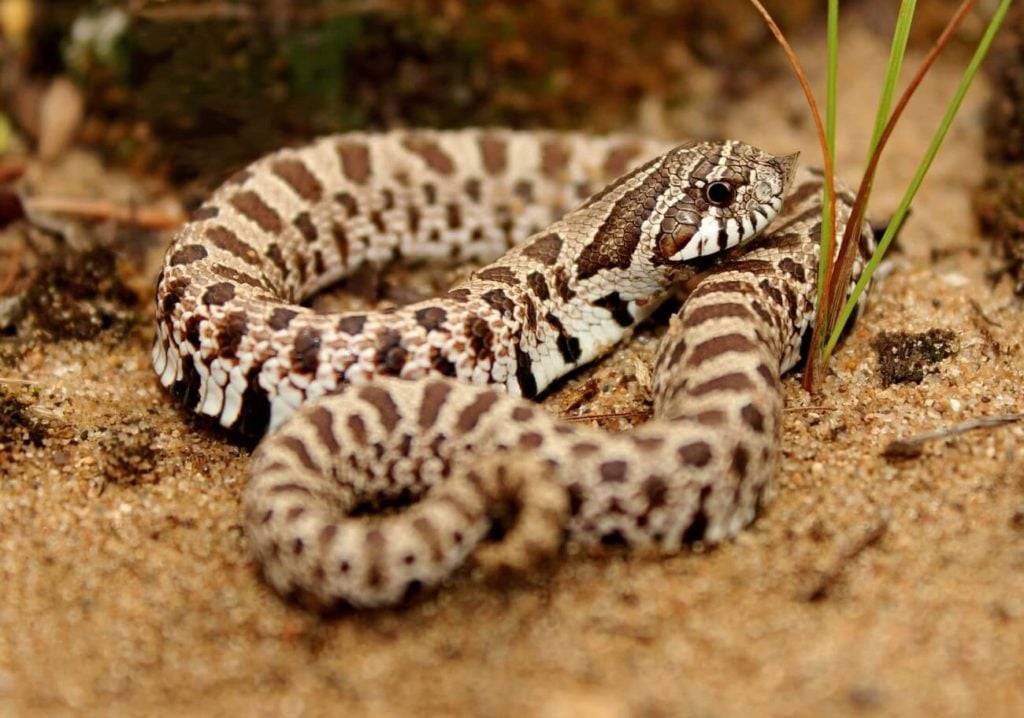
These snakes are very popular in the reptile trade, despite the fact that they are a venomous species. However, their venom is very mild and only causes harm to those who are allergic to it. Plus, Western Hognose bites are rare thanks to their docile nature.
In the wild, you can find these snakes living in the Great Plains of America. Their natural habitat extends from northern Mexico all the way up to southern Canada.
These days, most specimens in the pet trade are captive-bred. They’re available around the world and in many stunning color morphs.
Western Hognose Snake Size
The average size of a Western Hognose snake is not very long, as these reptiles have more of a stout build than many other species.
Females will typically reach lengths of around 36 inches in length at most. On the other hand, males are a bit shorter and will usually stay between 14 and 24 inches.
Lifespan
With proper care, the average lifespan of a Western Hognose is around 18 years. In rare cases, some snakes have even surpassed the 20-year mark!
While there’s no way to estimate a snake’s exact life expectancy, you should view purchasing one as a fairly large long term commitment.
Expert Tip: Like any other captive reptile, the Western Hognose depends on top-notch care to reach their full lifespan potential. Without an appropriate environment, proper maintenance, and a good diet, these snakes can succumb to illness early on.
Appearance & Colors
The neat thing about Western Hognose snakes is that they share a lot of features with rattlesnakes!
Coloration can vary from snake to snake. However, the most common coloration consists of a base color of light tan, gray, or olive green. On top of that, the snakes are sporting darker spots or bars that run along the entire body.
Expert Tip: These spots can take on a square or diamond shape, which is why many misidentify them as rattlesnakes in the wild.
The head of the Western Hognose is definitely the feature that stands out the most.
Like the rest of the body, it’s covered in keeled scales. On the head, the scales are much larger. The nose scales have a distinct shape.
Together, they give the snake an upturned snout with a subtle point. The nose helps the snake burrow into sand and substrate. It also gives off a hog-like look, which is how the snake got its name!
Western Hognose Snake Care
Thanks to their easygoing nature, these Western Hognose snake care is relatively easy (no matter how much experience you have). These reptiles adapt well to life in captivity.
That said, you must do your part to cover their needs and help them thrive! Provide a well-maintained habitat and a high-quality diet will make a significant impact on their health and happiness.
Below are some tips to make that happen!
Enclosure Size
Since these reptiles are usually less than three feet in length, you don’t need a massive enclosure to keep these snakes happy.
In most cases, an adult will have no problem spending their life in a 20-gallon terrarium. Choose an enclosure with a mesh top for proper ventilation. A vivarium-style habitat with front-swinging doors works well, too.
For the best results, choose a home with plenty of horizontal space. As a good rule of thumb, the enclosure should be no smaller than 36 inches wide, 24 inches deep, and 24 inches tall.
The wider shape of the enclosure will accommodate the temperature gradient these snakes need to stay healthy (more on that later).
Recommended Habitat Setup
Coming from a semi-arid environment, you have a lot of flexibility when it comes to decor.
Starting with the substrate, you can use something as simple as newspaper. If you prefer something a bit more polished, you can use aspen shavings.
A mixture of soil and clay work well, too. In fact, this natural substrate closely resembles the soil they burrow into in the wild!
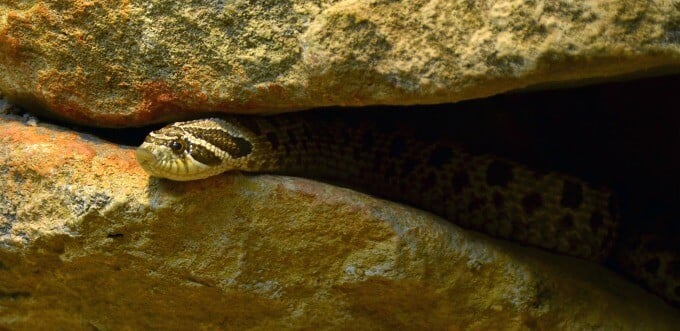
It’s worth pointing out that soil and clay substrates will retain more moisture, which can increase the humidity in the tank. That means if you ever decide to switch substrates it’s important to monitor the humidity levels during this process.
Expert Tip: We recommend avoiding any sand-based substrate. The snakes could accidentally ingest some sand particles and experience compaction. This is especially true if the snake eats in its main enclosure.
On top of the substrate, you can add rocks and other decorative items the snake can climb over. Natural rocks, such as slate, are a great choice because they hold onto heat from the lamp.
Shade and shelter are necessary as well.
Place two hide boxes on opposite ends of the enclosure. This will give them somewhere to go if they want privacy or simply need to cool off.
You can also incorporate silk plants or artificial caves. Don’t be afraid to get creative and set up a natural environment the snake will enjoy!
Temperature & Lighting
As diurnal creatures, Western Hognose snakes need ample light throughout the day. They also require plenty of heat.
These snakes self-regulate their body heat. This means you’ll need to create an appropriate temperature gradient in their habitat.
- On one end of the enclosure, use a powerful basking lamp. Temperatures in this area should be as high as 90 degrees Fahrenheit.
- For the cooler end, keep temperatures between 75 and 80 degrees.
When the sun goes down and the lights turn off, these snakes can tolerate environments as cool as 72 degrees.
It’s a good idea to install an under-tank heating pad around the basking area (especially if you live in a cooler part of the world). This will keep ambient temperatures in a safe range and give the snakes a place to get cozy even when the lights are out.
Dedicated UVB lights aren’t a hard requirement. However, it doesn’t hurt to have them for good measure. These snakes do have exposure to UVB light in the wild, so it’s a good idea to replicate that when possible.
Expert Tip: Shine the light into the enclosure for 10 to 14 hours every day. It’s best to keep everything on a timer for the sake of consistency (and convenience).
Humidity
Western Hognose snakes do best in low-humidity environments where the levels are under 30 percent. If the humidity climbs above this mark it could lead to some potential health problems (we cover those a bit further down in the guide).
If humidity levels are getting too high open up the ventilation ports and let air circulate through. This will evaporate any moisture in the habitat and keep the air dry.
Get a high-quality hygrometer so you can monitor these levels regularly. It’s one of the most important pieces of equipment you’ll need!
Water
Even with their need for low humidity, Western Hognose snakes still need a water dish! Install a shallow dish into the enclosure and keep it filled with clean water at all times.
You might find the snake soaking in the dish every once in a while. That’s perfectly normal! Many snakes use the water to cool off or help with shedding.
Expert Tip: Clean the dish out regularly to avoid algae or bacteria problems. Dirty water is one of the easiest ways for disease and bacteria to develop within an enclosure, so it’s important to be consistent with this.
Food & Diet
Western Hognose snakes are carnivores with a healthy appetite for rodents! They do best on a simple diet of mice.
Provide a thawed mouse every 10 to 14 days. It’s important to avoid feeding adults weekly since these snakes are prone to gaining weight.
We recommend feeding these snakes in a separate enclosure that’s free of any substrate or decorations. This will help you avoid any accidental particle ingestion (which can cause serious health complications).
Expert Tip: Exercise some caution during feeding. Western Hognose snakes are very lively when they’re hungry!
They’ll often greet you with their mouths agape whenever it’s time for feeding. Since these snakes can strike, you might want to use tongs to deliver their meals until you get used to the process.
Potential Health Issues
Western Hognose snakes can suffer from diseases like any other reptile. Some of the most common conditions to be wary of are respiratory infections and parasites.
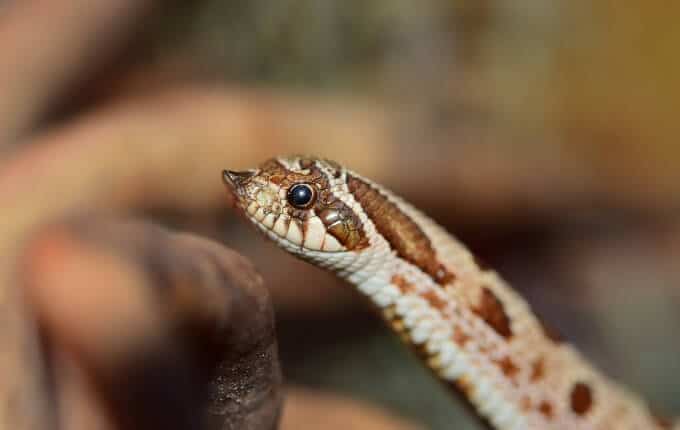
Respiratory infections are a byproduct of too much humidity. Depending on the severity of the issue, you might see mucus seeping from the snake’s eyes or nostrils. Internally, the nasal passageways will be inflamed.
Bring your snake to a veterinarian that specializes in exotic animals. They will likely prescribe an antibiotic treatment to take care of the problem. In the meantime, lower humidity levels in the enclosure to prevent future infections.
Western Hognose snakes can also experience internal parasites and external mites. For both cases, a poorly maintained environment is likely to blame. Without proper cleaning, bacteria and parasites can flourish in the enclosure.
Make sure that you’re spot cleaning messes daily. Also, break down the habitat completely and wipe everything down with reptile disinfectant once a month. This should keep bacteria and parasites at bay.
Behavior & Temperament
Western Hognose snakes are relatively docile. In the beginning, they can be shy and spend more time hiding out.
However, that behavior will subside once they get more comfortable with the environment.
These snakes are unique in the fact that they like to mimic other snakes whenever they feel stressed or scared. When caught off guard, you might see your snake flatten its body. It may even flatten the ribs on its neck to create a faux hood like a Cobra!
As a finishing touch, these snakes are very vocal. They can force air through their skull to create a loud hissing sound.
Expert Tip: While it’s rare in captivity, Western Hognose snakes can play dead, too. When they’re tried all of their other defense tactics, these snakes will roll onto its back and open its mouth to feign death.
These behaviors can be alarming at first. But don’t worry, they’re completely harmless!
That said, you should use the behaviors as a sign that they want you to back off. Give the snake some space and let them get comfortable.
Handling Information
Western Hognose snakes will get more comfortable with handling as time goes on.
This species has a tendency to be a bit head shy sometimes. They may jerk their head away from your hand as you approach. Some may also “strike” (but this striking is really nothing more than a headbutt).
If the snake is exhibiting any of these behaviors, it means that they’re not comfortable yet. Wait a while and try again later. Be gradual with the length of time you handle them and slowly increase it as they become more comfortable with you.
When your snake is ready, they’ll let you handle them. Support their entire body and be gentle. Once you gain this level of trust from your snake, they should have no problem with you going forward!.
Conclusion
Western Hognose snake care can be handled by pretty much anyone. As long as you follow the recommendations and stay consistent, these pet snakes will thrive!
If you’re still on the fence about purchasing one, we definitely recommend it. This species is quite personable and fun to own.
We know many owners who absolutely love theirs. You should join the club!

